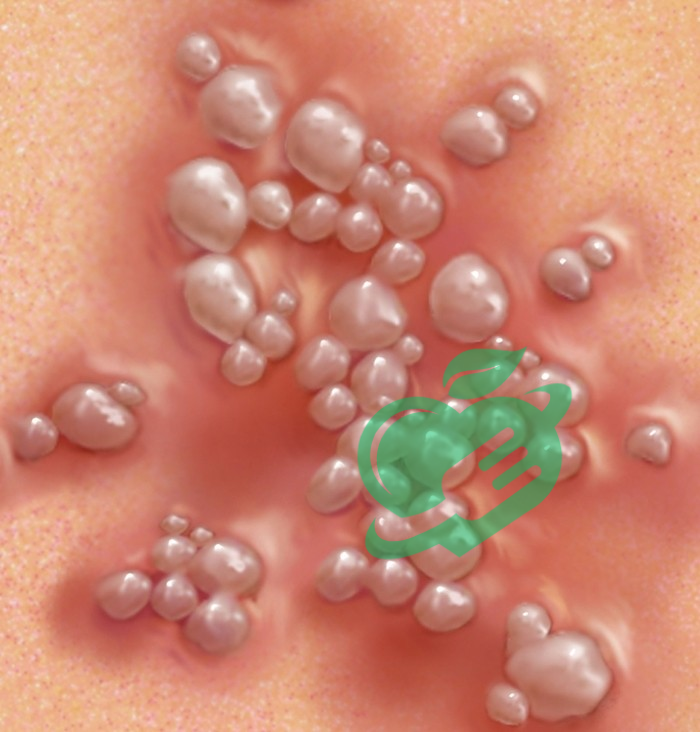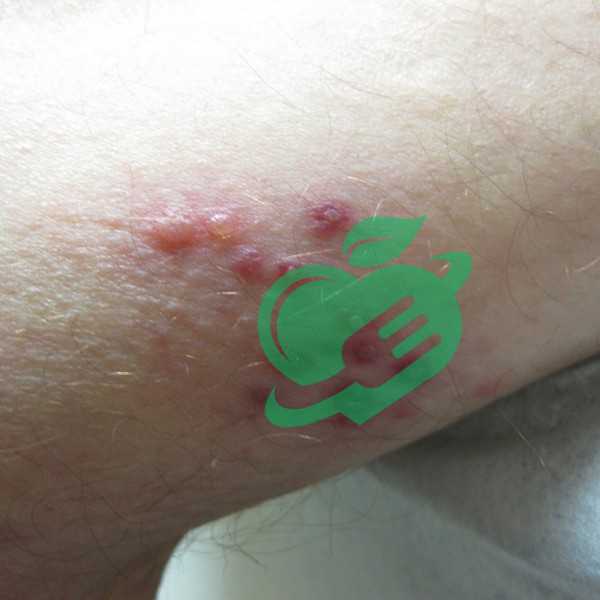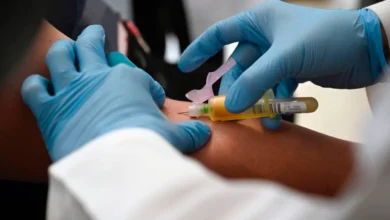Breaking the Stigma: Real Genital Herpes Pictures Shared

Understanding Genital Herpes Pictures
What is Genital Herpes?
Genital Herpes Pictures is a common sexually transmitted infection (STI) caused by the herpes simplex virus (HSV). There are two types of this virus: HSV-1 and HSV-2. Although HSV-1 is primarily known for causing oral herpes, it can also lead to genital infections, particularly as more people engage in oral-genital contact. Conversely, HSV-2 is mostly associated with genital herpes. The infection is characterized by the development of painful sores in the genital area, but many people experience mild or even no symptoms at all, leading to a surprisingly high number of undiagnosed cases. According to the World Health Organization (WHO), approximately 417 million people worldwide are infected with HSV-2, and many of them may not be aware they have it until symptoms arise. Understanding genital herpes begins with recognizing its symptoms, which can vary substantially. Many individuals may experience:
- Initial Outbreak: This often includes flu-like symptoms, such as fever, body aches, and swollen lymph nodes, followed by the appearance of sores.
- Recurring Outbreaks: After the initial infection, the virus remains dormant in the body and can reactivate, leading to further outbreaks. These are usually less severe and shorter in duration.
- Asymptomatic Cases: Many people carrying HSV-2 may never exhibit noticeable symptoms, making awareness even more crucial.
It’s essential for individuals to educate themselves about genital herpes, as this can lead to better prevention and treatment strategies. Awareness regarding the condition can foster earlier detection and management, ensuring that those affected can lead healthy lives.
Importance of Recognizing Symptoms
Recognizing the symptoms of genital herpes is vital—not only for those who are directly affected but also for public health. Acknowledging these symptoms can significantly mitigate the risk of transmission to partners and provide individuals with the necessary information to seek support and treatment. Here are some key reasons why recognizing genital herpes symptoms is essential:
- Timely Diagnosis: Early recognition can lead to a prompt diagnosis, allowing affected individuals to access treatment options and learn about management strategies.
- Limited Transmission: Individuals who are aware of their status and symptoms are more likely to take precautions, thereby reducing the transmission risk. This includes practicing safe sex and being open about their condition with partners.
- Psychological Impact: Learning to recognize the symptoms can help alleviate anxiety for those affected. Instead of fearing the unknown, individuals can develop a proactive approach to their health.
- Informed Relationships: Being aware of the symptoms fosters honest conversations between partners about sexual health. Knowing how to recognize a breakout allows both parties to make informed decisions regarding their sexual activities.
- Support Networks: Recognizing symptoms leads individuals to seek community support. Connecting with others who share similar experiences can be comforting and empowering, making the journey easier.
Consider this approach: imagine experiencing a tingling sensation or an unusual itch in the genital area. If individuals are informed about potential symptoms, they might relate these sensations to herpes and seek advice promptly rather than ignoring or misinterpreting them. To summarize, understanding and recognizing genital herpes symptoms increases an individual’s awareness and control over their sexual health. By providing knowledge about HSV, individuals can pave the way for healthier relationships and contribute to dispelling myths and stigmas associated with this condition. This proactive approach becomes even more effective when supported by visual aids, such as genital herpes pictures, which help people better identify symptoms and facilitate informed discussions around this common infection.

Real Genital Herpes Pictures: Breaking the Stigma
Sharing Authentic Images
In the realm of health education, visual aids play a crucial role in comprehension and awareness. Sharing authentic images of genital herpes can be a pivotal step in breaking down the stigma surrounding this common STI. When individuals see real images depicting the symptoms, it can demystify the condition and encourage those who may be suffering in silence to seek help. Why Authentic Images Matter
- Facilitates Recognition: Authentic images help individuals identify the symptoms accurately. When someone experiences unusual symptoms, they may feel unsure about what they are dealing with. Seeing real pictures can empower them to recognize the signs and seek medical advice without dread.
- Normalizes the Experience: By showcasing actual cases of genital herpes, the narrative shifts from fear and shame to acceptance. Many people suffer from the infection, and seeing others with similar conditions may instill a sense of solidarity and understanding.
- Enhances Education: For educators and health professionals, authentic images provide a resource for teaching about genital herpes. Whether in schools, clinics, or community settings, real-life examples can enhance discussions around sexual health, leading to more informed conversations.
- Promotes Acceptance: When people understand what genital herpes looks like through real images, the feelings of stigma surrounding the infection begin to dissipate. Acknowledging that the condition affects millions of others encourages empathy and reduces fear-based reactions.
Remember, sharing authentic images isn’t about sensationalism or exploiting individuals’ health struggles. It’s about fostering a safe space where dialogue can flourish, misinformation can be dispelled, and individuals can gain a sense of agency over their health.
Impact on Awareness and Education
The impact of sharing authentic images of genital herpes extends far beyond mere recognition. It plays a transformative role in awareness and education, shaping how society views this common infection and its implications. Educational Initiatives
- Workshops and Seminars: Health organizations can host workshops utilizing genital herpes pictures to educate audiences. By employing visuals, speakers can convey essential information regarding prevention, treatment, and stigma reduction.
- Digital Campaigns: Social media has become a powerful platform for health education. By launching campaigns that share real images and personal stories, individuals and organizations can reach wide audiences, fostering open discussions and raising awareness about the prevalence of genital herpes.
- Informational Resources: Websites and tomes that compile authentic images alongside clinical information can serve as valuable resources for individuals seeking answers. Such platforms normalize the condition and empower users with knowledge.
Breaking Down Stigmas through Awareness The stigma associated with genital herpes often stems from misinformation, lack of awareness, and cultural taboos surrounding sexual health. The more open the discussions are, the more that stigma can fade.
- Personal Stories: Listening to personal stories from those affected can be incredibly powerful. By combining these narratives with real images, it presents a holistic view of the herpes experience—from initial diagnosis to managing outbreaks. This humanizes the condition, transforming it from a mere medical term into lived experiences.
- Community Support: Building community around sexual health encourages open dialogue. Support groups, whether online or in-person, create spaces where individuals feel safe sharing their experiences and accessing helpful resources. Authentic images can serve as a visual backdrop to these discussions, making the topic less daunting.
By sharing authentic images and engaging in educational discussions, the focus can shift towards awareness rather than shame. It encourages acceptance and highlights the importance of compassion for those living with genital herpes. Ultimately, breaking the stigma surrounding genital herpes is not just about improving awareness of the infection itself; it’s about fostering understanding, empathy, and community. This goes a long way in ensuring that those affected can lead healthier, happier lives, free from the burdens of stigma and fear.

Dispelling Myths Surrounding Genital Herpes
Common Misconceptions
Despite genital herpes being a widespread infection, many misconceptions surround it. These myths can perpetuate stigma, create fear, and lead to avoidance of important conversations regarding sexual health. Let’s take a closer look at some common misconceptions about genital herpes:
- Myth 1: Only Sexually Promiscuous People Get Herpes This stereotype is not only inaccurate but also harmful. Genital herpes can affect anyone who is sexually active. Even those who have had only one sexual partner can contract the virus. The reality is that herpes can be transmitted during asymptomatic periods, where individuals exhibit no visible symptoms.
- Myth 2: You Can Only Get Herpes from Sexual Intercourse While sexual activity is the most common way to contract genital herpes, the virus can also be spread through skin-to-skin contact. Touching an infected area and then touching another part of the body or another person can lead to transmission. Additionally, oral herpes (often HSV-1) can be transferred to the genital region through oral sex.
- Myth 3: Herpes is a Fatal Condition This fear is rooted in misinformation. Although herpes can lead to uncomfortable outbreaks, it is generally manageable through antiviral medications and lifestyle adjustments. Most people live healthy, fulfilling lives despite having the virus.
- Myth 4: If You Have No Symptoms, You Can’t Spread Herpes This misconception can have serious implications. Many people with genital herpes are unaware they have it because they do not show symptoms or have very mild ones. This means they can unknowingly transmit the virus to others. Educating oneself about the risks is essential for everyone.
- Myth 5: Herpes Can Be Cured Currently, there is no cure for herpes. However, there are effective treatments available that can help manage outbreaks, reduce their frequency, and lower the risk of transmission. It’s important to be informed about treatment options, which can greatly enhance the quality of life for those affected.
Educating the Public
Addressing these misconceptions is crucial, and education plays a key role in dispelling myths surrounding genital herpes. Here are several effective ways to promote education within communities:
- Comprehensive Sexual Education Courses: Schools and organizations should emphasize comprehensive sexual education that includes information about STIs, specifically genital herpes. Equipping young people with knowledge can empower them to make informed decisions and reduce fear-based stigmas surrounding these conditions.
- Community Outreach Programs: Local health departments can host workshops or seminars that focus on STIs, offering Q&A sessions with healthcare professionals. This provides a safe space for individuals to ask questions and get accurate information.
- Utilizing Social Media: Leveraging social media platforms can enhance the reach of educational campaigns. By sharing factual information, infographics, and personal stories, health advocates can engage a broader audience in conversations about genital herpes, normalizing the discussion and reducing shame.
- Support Groups: Creating support networks for those affected by genital herpes not only allows individuals to connect with others in similar situations but also serves as an avenue for education. These groups can facilitate discussions surrounding myths and help individuals understand the realities of living with genital herpes.
- Partnering with Healthcare Professionals: Healthcare providers play a fundamental role in educating patients about STIs. Routine discussions during medical visits can normalize the conversation about genital herpes and provide valuable information about prevention and treatment options.
It’s essential to make the conversation about genital herpes approachable and open. When myths are replaced with facts, fear decreases, and acceptance rises. By equipping communities with proper education, it becomes possible to foster an environment where those affected feel supported rather than shamed. Breaking down the myths surrounding genital herpes is a significant step towards improving public understanding and reducing stigma. Through education and awareness, more individuals can learn about this manageable condition, leading to healthier conversations around sexual health and well-being.
Read also : Unraveling the Mystery: Common Triggers of Painful Urination

The Significance of Visibility in Health Issues
Empowering Those Affected
In the realm of health, visibility isn’t just about being seen; it’s about being understood and supported. When health issues—like genital herpes—are openly discussed and depicted, it empowers individuals who might feel isolated by their conditions. This visibility allows those affected to take charge of their health in several transformative ways. 1. Mitigating Isolation One of the harsh realities of living with genital herpes is the loneliness it can create. Many individuals may feel that they are the only ones dealing with this condition, leading to a belief that no one else understands their experiences. Gender, sexual orientation, and societal taboos can all amplify this sense of isolation. Real-life narratives and authentic images break this cycle by showcasing shared experiences. Hearing stories from others who have faced the same challenges can ignite a sense of camaraderie and community. 2. Building Confidence When individuals see themselves represented in discussions about genital herpes, it fosters confidence. It tells them they have a rightful place in the conversation regarding sexual health. For example, someone who may shy away from discussing their diagnosis due to fear of judgment could feel empowered to share their journey after seeing others do the same. This empowerment leads to better self-advocacy, encouraging individuals to seek medical help, discuss their needs with partners, and prioritize their emotional well-being. 3. Accessing Resources Visibility also opens doors to information and resources. When genital herpes is portrayed openly, it drives traffic to support groups, educational materials, and mental health services. Those affected can explore options from community resources to online forums, seeking guidance and understanding more readily. 4. Breaking Down Barriers Having real conversations and visuals surrounding Genital Herpes Pictures contributes to dismantling the barriers of stigma and misinformation. It becomes easier for people to talk about their health issues when they see others doing so. This normalization is vital for creating a more understanding society where individuals feel comfortable seeking help without fear of judgment.

Promoting Open Dialogue
Visibility also plays a tremendous role in promoting open dialogue, which is essential for fostering understanding and acceptance of Genital Herpes Pictures and similar health issues. Open conversations can eliminate misinformation and create a more informed public.
1. Creating Healthy Conversations Fostering dialogues encourages people to ask questions and seek clarity. When health issues are openly discussed, individuals become more comfortable expressing concerns and curiosities. For instance, a friend may feel empowered to discuss their partner’s herpes diagnosis without awkwardness, thus normalizing such discussions and reducing stigma.
2. Engaging Health Professionals Visibility facilitates interaction between patients and healthcare providers. Medical professionals who recognize the importance of open dialogue can create safe spaces for patients to discuss their sexual health without feeling embarrassed. This leads to more effective treatment plans and better overall health outcomes.
3. Challenging Stereotypes Engaging in discussions helps challenge and combat stereotypes surrounding Genital Herpes Pictures . It pushes back against the narrative that stigmatizes those living with the virus. Instead, people come to understand that they are not alone and that genital herpes is just one aspect of a person’s life—one that doesn’t define them.
4. Encouraging Research and Funding Visibility can also drive awareness, which may lead to increased research and funding for STIs, including Genital Herpes Pictures . Open discussions can lead to public campaigns that challenge institutions to prioritize education, treatment options, and viral research. The significance of visibility in health issues, particularly in conditions like genital herpes, lies in its power to promote understanding, foster connections, and empower those affected. Open dialogue strengthens the community, dismantles stigma, and encourages individuals to seek the support they need. Ultimately, by encouraging conversations around genital herpes, we can create a more compassionate society that values health, education, and empathy. Visibility is not merely about presence; it’s about creating a rich tapestry of understanding where everyone feels safe, heard, and validated in their experiences.
Supporting Those with Genital Herpes
Resources and Support Groups
Supporting individuals living with genital herpes involves creating accessible resources and establishing robust support networks. Oftentimes, those diagnosed feel a sense of isolation and confusion about their condition. Having access to reliable information and connecting with others who share similar experiences can make a significant difference.
1. Online Resources The internet has become a valuable tool for people seeking information and support related to genital herpes. Here are some reputable websites that offer a wealth of resources:
- American Sexual Health Association (ASHA): This organization provides accurate information about STIs, including genital herpes. Their site includes educational articles, symptoms, and treatment options.
- Herpes Support Group: This online community connects those affected by herpes. Members can share their experiences, access advice, and find comfort in knowing they are not alone.
- Center for Disease Control and Prevention (CDC): The CDC’s website contains guidelines and information about herpes transmission, prevention, and statistics, all presented in an easy-to-digest format.
2. Local Support Groups In-person support groups are invaluable for individuals grappling with an STI diagnosis. A local support group can help ease feelings of isolation and provide a safe space for discussion. Participating in these groups can lead to:
- Shared Experiences: Hearing personal stories can help validate one’s feelings and provide coping strategies. For example, an individual may find comfort in learning about others’ journeys in managing outbreaks and dating while living with herpes.
- Expert Guidance: Many support groups invite healthcare professionals to speak on topics related to genital herpes. This can empower individuals with knowledge and provide the opportunity to ask questions in a judgment-free zone.
- Emotional Support: Group members can serve as a network of support, understanding the fear and stigma that often accompany an STI diagnosis. Such bonding can foster friendships that extend beyond the group setting.
Finding a local support group can be as simple as checking with community health clinics, local hospitals, or using social media platforms to connect with other individuals within the community.
Importance of Compassion and Understanding
While resources and support networks play a crucial role, the importance of compassion and understanding cannot be overstated. For those living with genital herpes, navigating relationships, social situations, and personal feelings can be daunting. A little kindness goes a long way.
1. Fostering a Non-Judgmental Environment Compassion starts with creating a safe and non-judgmental space. This is especially crucial in interpersonal relationships. By actively listening and approaching the conversation with understanding, individuals with genital herpes may feel more comfortable sharing their experiences.
- Listen Actively: If a friend or loved one confides in you about their diagnosis, listen without interruption. Validate their feelings and express empathy. Phrases like, “I can’t imagine how hard that must be for you,” can help create a supportive atmosphere.
- Educate Yourself: Understanding the facts about genital herpes can help dispel personal biases or misconceptions. The more aware you are, the better equipped you will be to offer support.
Read also : Vaginitis Unveiled: Symptoms, Treatments, and Prevention
2. Encouraging an Open Dialogue Inviting open conversations about health, including STIs, can significantly reduce stigma. This not only creates solidarity among those affected but also encourages others to seek help without fear.
- Share Knowledge: When discussing sexual health, validate the experiences of those affected by genital herpes. Use facts to combat myths and encourage your peers to be informed.
- Promote Acceptance: Advocating for a supportive community means standing up against stigma. Speak openly about genital herpes and highlight it as a health matter—just like any other condition.
3. Practicing Patience Living with Genital Herpes Pictures can come with emotional challenges. Encourage patience in yourself and those affected. Remember, open communication and understanding can alleviate fears and foster better relationships. In conclusion, supporting those with Genital Herpes Pictures requires a multi-faceted approach. By providing access to resources, encouraging compassionate understanding, and fostering open dialogues, we can create an environment where individuals feel accepted and empowered.
Together, we can dismantle stigma and build a community that prioritizes health, empathy, and compassion. This is the foundation for true support, enabling those affected to navigate their journey with confidence.



